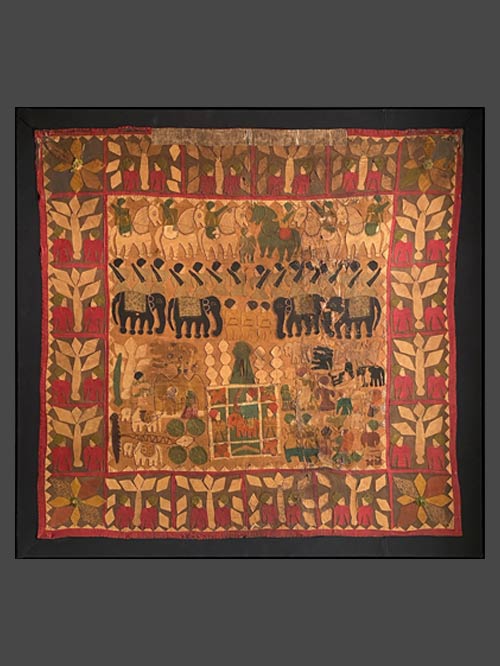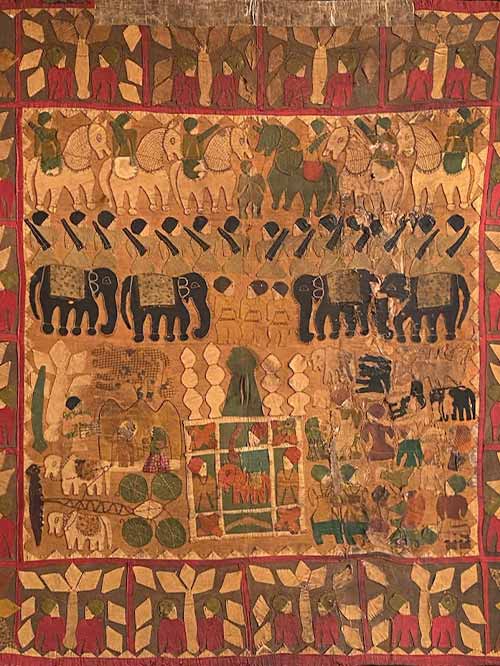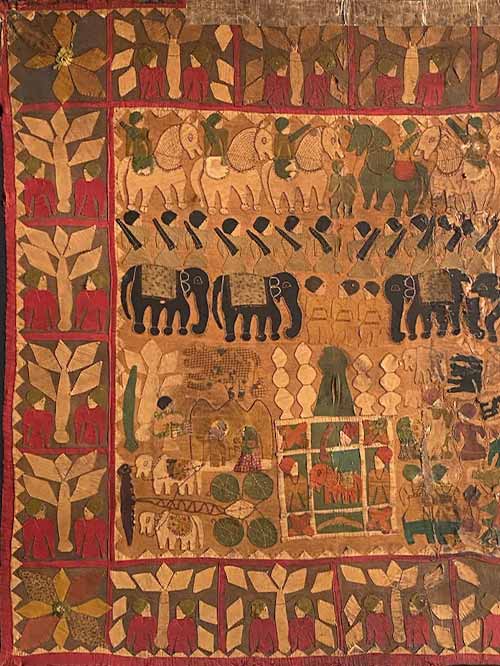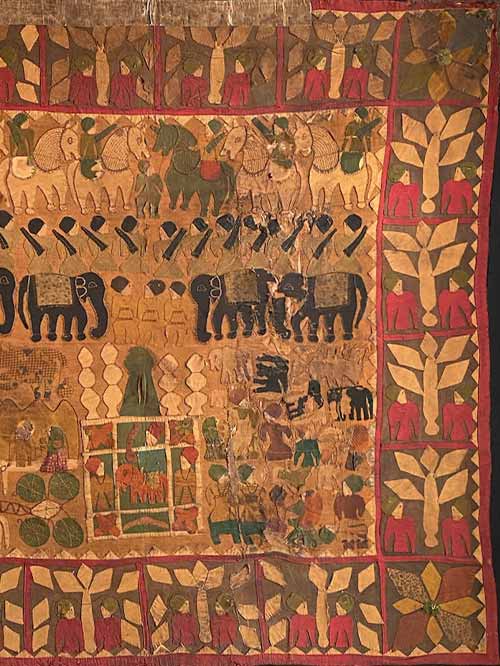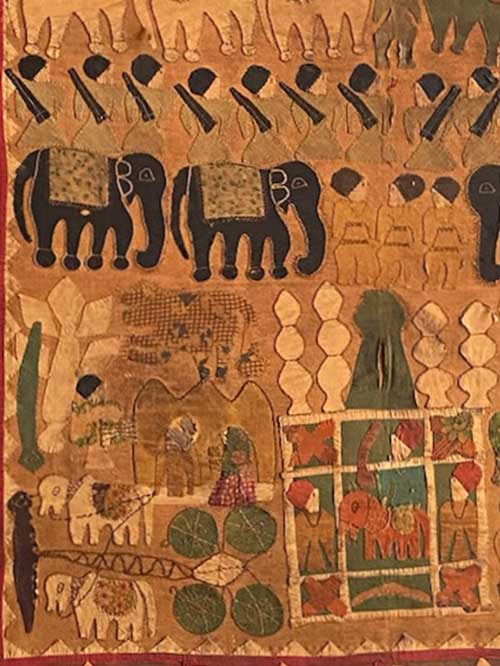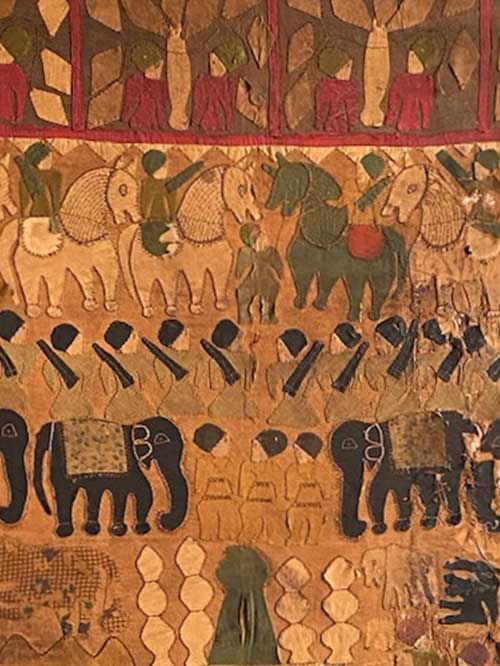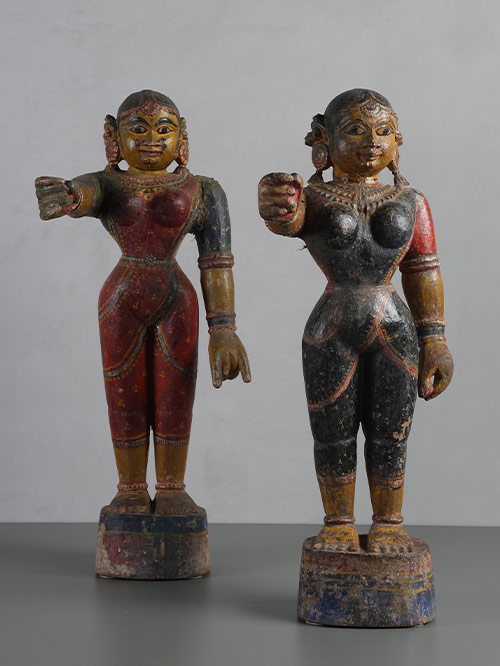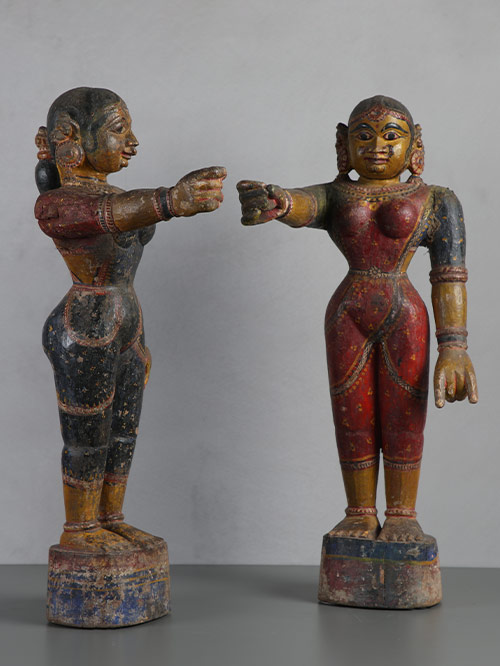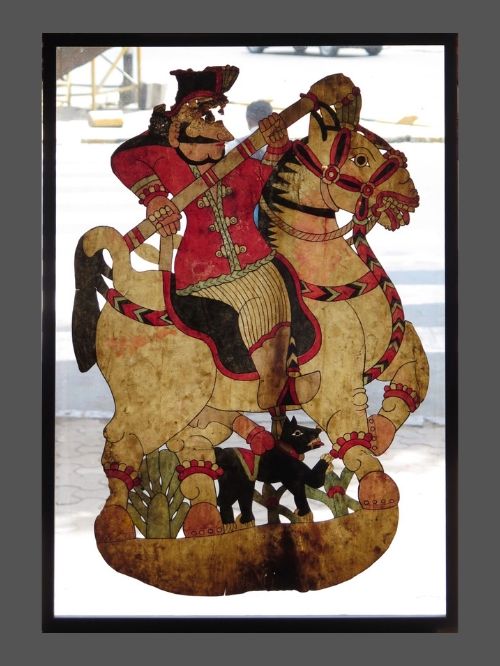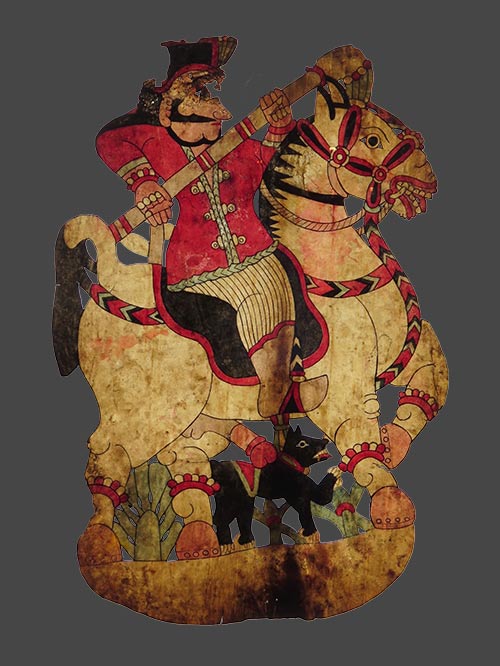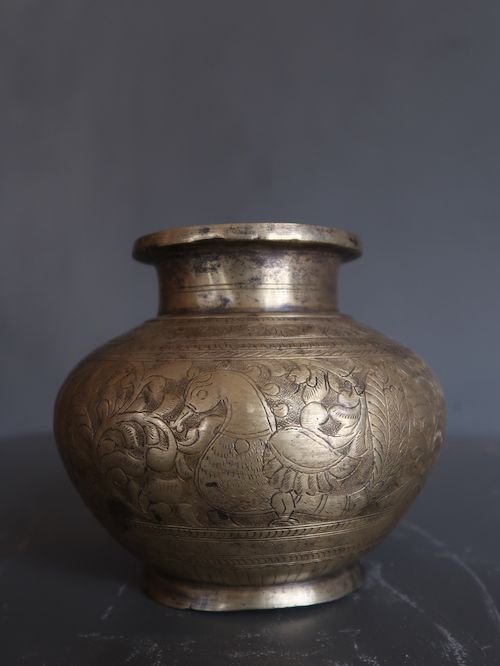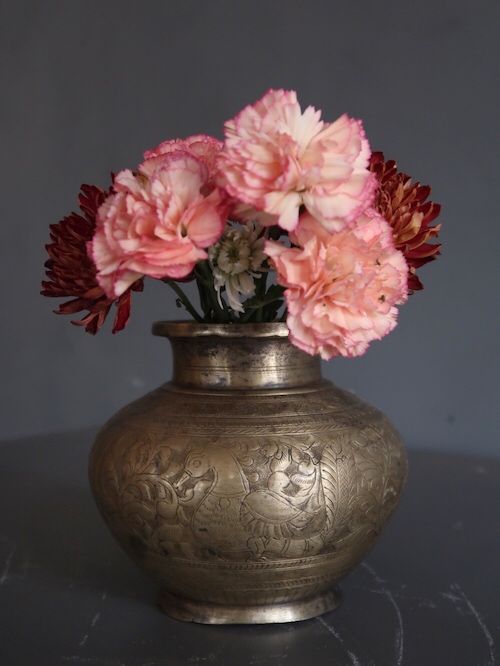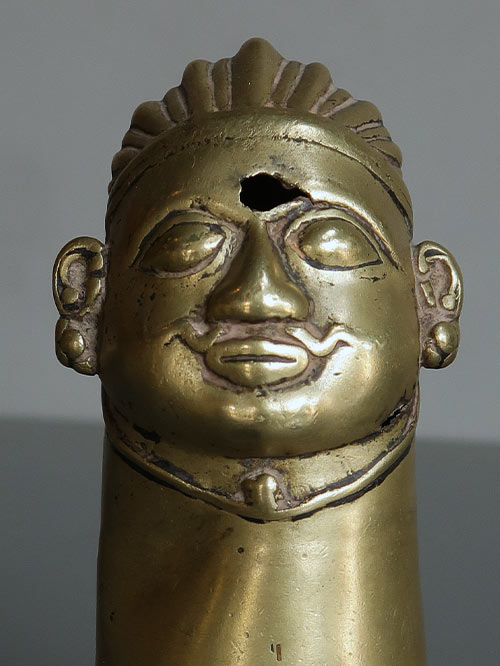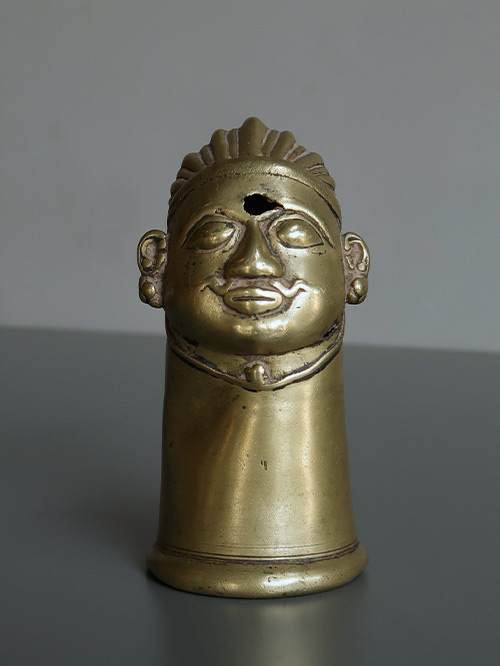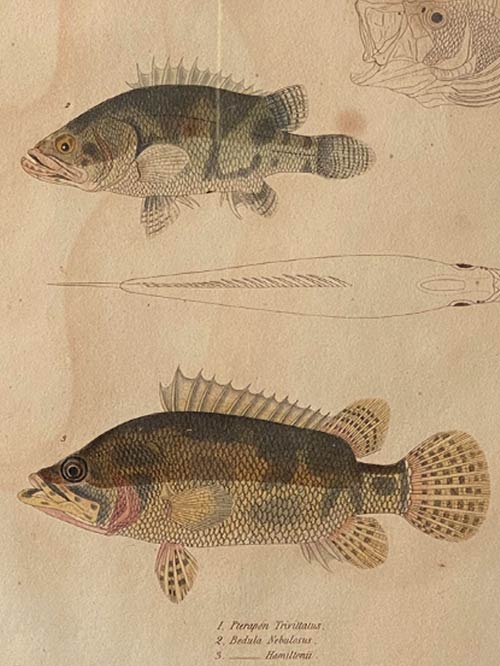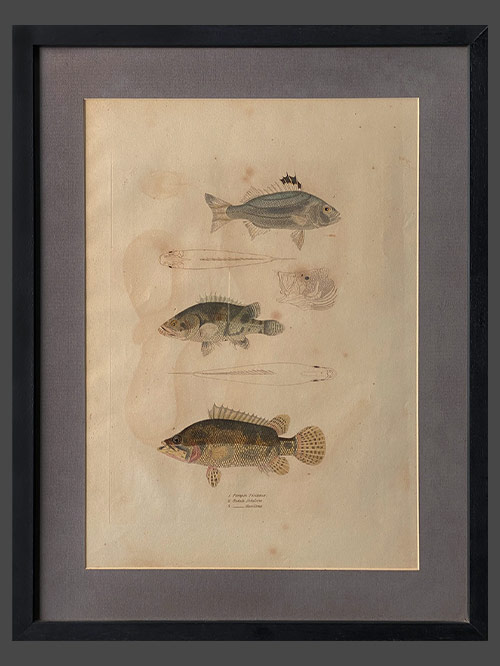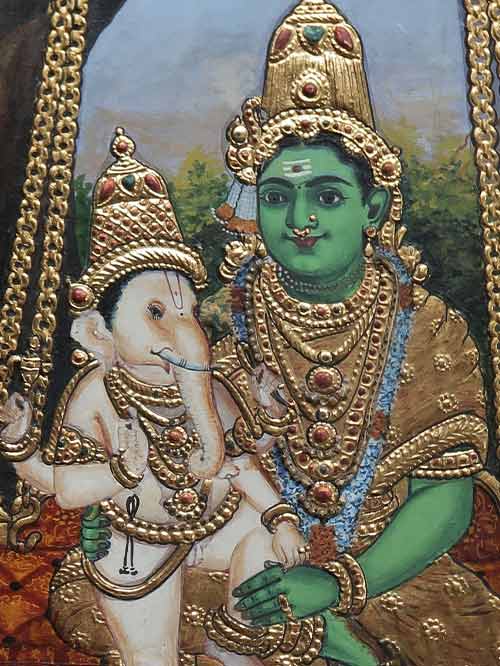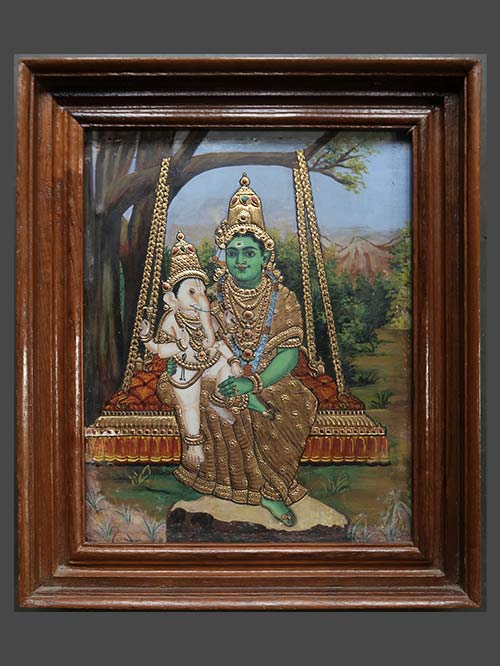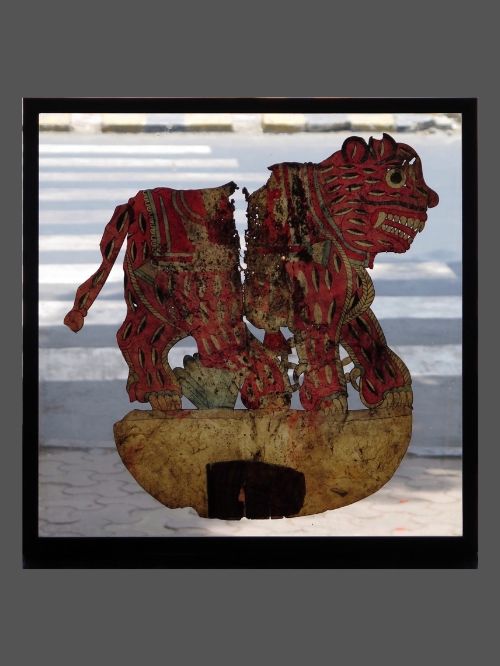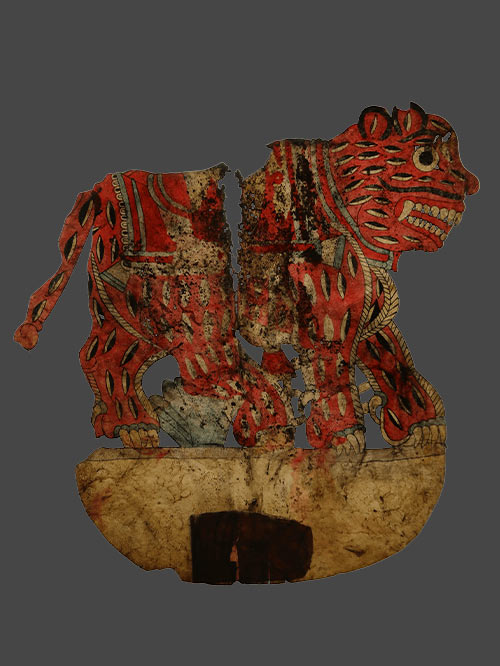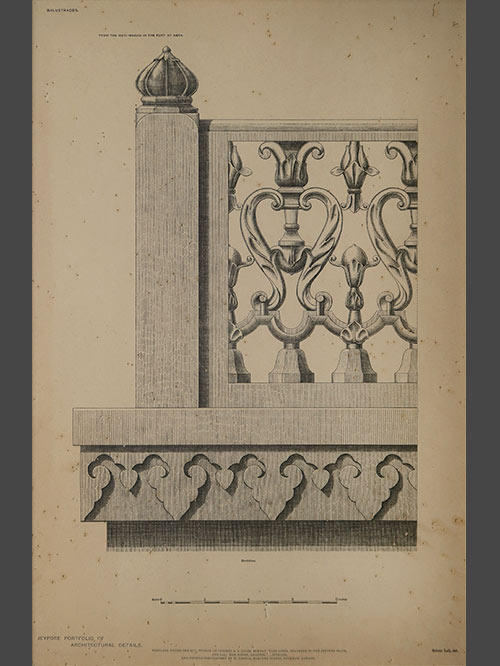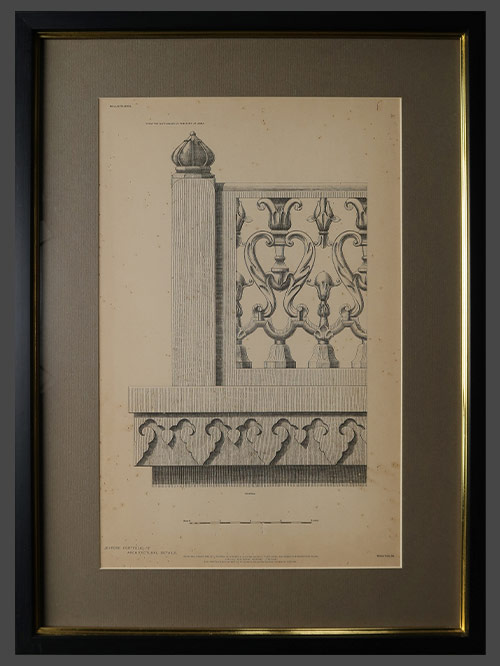Bharaich (Northern India)
Cloth with appliqué
A fine appliquéd shrine cloth depicting the mausoleum of the Saint Salar Masud. The cloth is decorated with a profusion of animal and figural motifs including elephants, horses, camels, ridden by soldiers in distinctive coloured caps and holding swords. In the centre is the shrine of the Saint Salar Masud flanked by two attendants. The colourful decorative border has repeating motifs of a central tree flanked by standing figures.
Pilgrims, both Muslim and Hindu, come in numbers to the sacred mausoleum of the Afghan warrior-saint Salar Mas’ud, the nephew of Mahmud of Ghazni, who was slain in battle in 1033. By 1325, a cult had evolved around his tomb (sacred for both Hindus and Muslims) in Bhariach, Uttar Pradesh, from people afflicted with polio and other leg problems. On the day of the Saint’s anniversary, offerings of flags are made in honor of the warrior-saint’s flagstaff, one of the shrine’s relics. During the celebration, the flag known as Kanduri, or ‘dastarkhwan’ (tablecloth) is offered. It is so named because of the offerings of food and incense made. The offering consists of ‘khule ghore’ (frisky horses), small horse-shaped wheat-balls dipped in syrup, which are ceremonially “buried”. The rest of the food is distributed and consumed on the new cloths brought by the devotees. This is the reason why Kanduri cloths usually appear stained by food and singed by incense.
Size (cms): 142(H) x 148(W)
Size (inches): 56(H) x 58.5(W)

